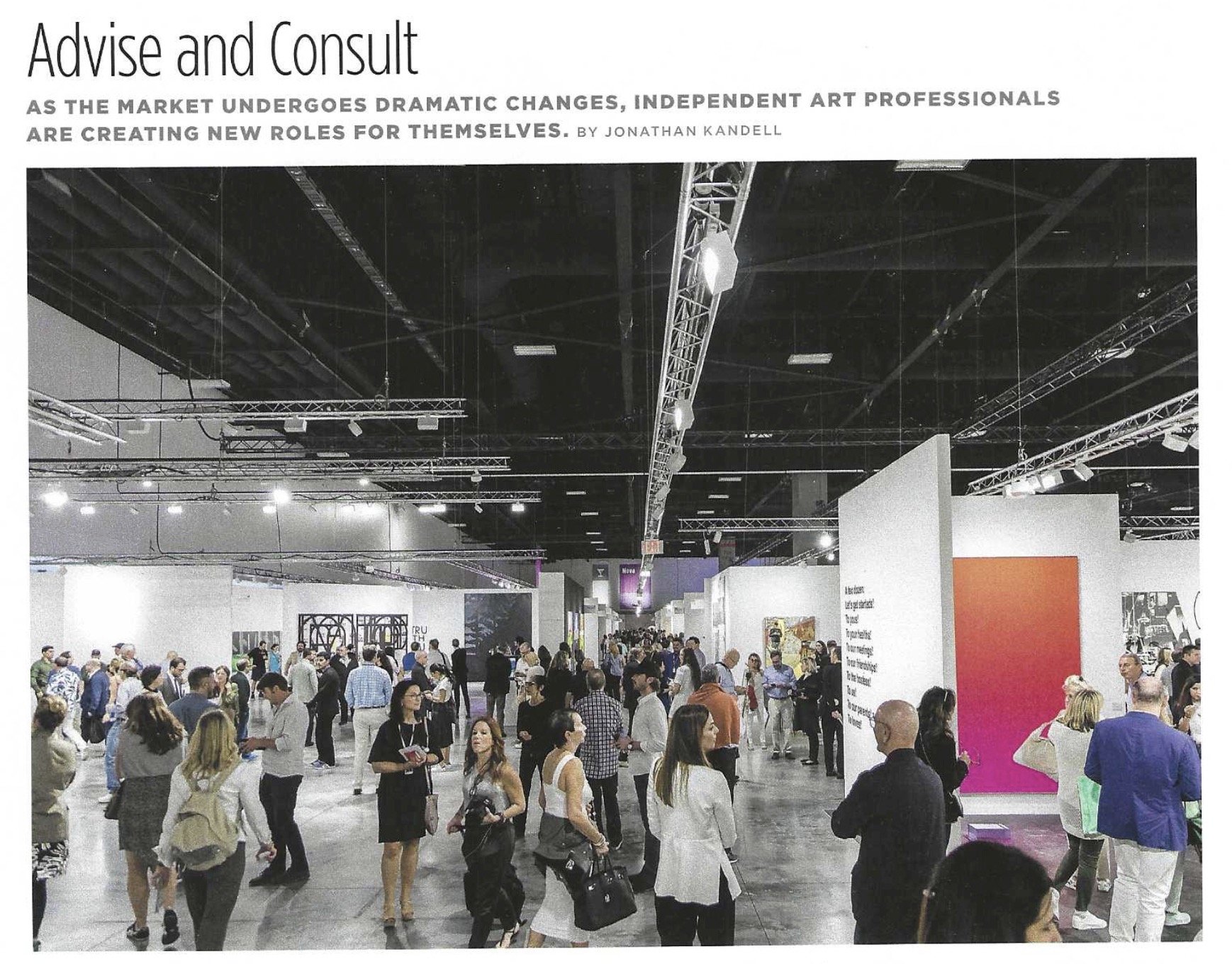Resources
ABOUT US / SERVICES / OUR CLIENTS / STORE / CONTACT
AES featured in Essay on the Art Market by Jonathan Kandell
by Jonathan Kandell
via Art & Antiques, Winter 2018-2019
FOR THE BETTER part of a century, the primary art market embraced Miami Beach. a simple, sturdy strategy: Artist creates work ... dealer puts it on display ... collector visits gallery and purchases the art .... But the internet age has battered this business model. It has also spawned a new breed of intermediaries representing artists or collectors-people like Jason Andrew and Lisa Schiff.
"I always align myself with the artists-I see myself as an extension of their studios," says Andrew, a Brooklyn-based promoter who uses unorthodox tactics on behalf of emerging and established artists. His best-known client is the late Elizabeth Murray, whose estate he represents. Schiff, an art consultant for collectors, readily admits she never sets foot in a studio or deals with artists. "I only work with a select group of very high net worth, sophisticated people," says Schiff, whose Tribeca office is a few blocks from her loft, formerly owned by the late James Gandolfini. Her most prominent client is Leonardo DiCaprio.
Despite the vast chasm between them, Andrew and Schiff are protagonists in an era that has witnessed the dramatic decline in the fortunes and influence of many galleries. Gagosian, Zwirner, and Pace continue to rack up record annual profits. But incomes are plummeting at long established middle-market galleries as collectors, guided by advisors like Schiff, scout out acquisitions on Instagram and prefer making their purchases at international art fairs. Frustrated by increasingly limited opportunities at galleries, artists turn to promoters like Andrew to create seductive websites, arrange studio visits and stage pop-up showings of their works.


